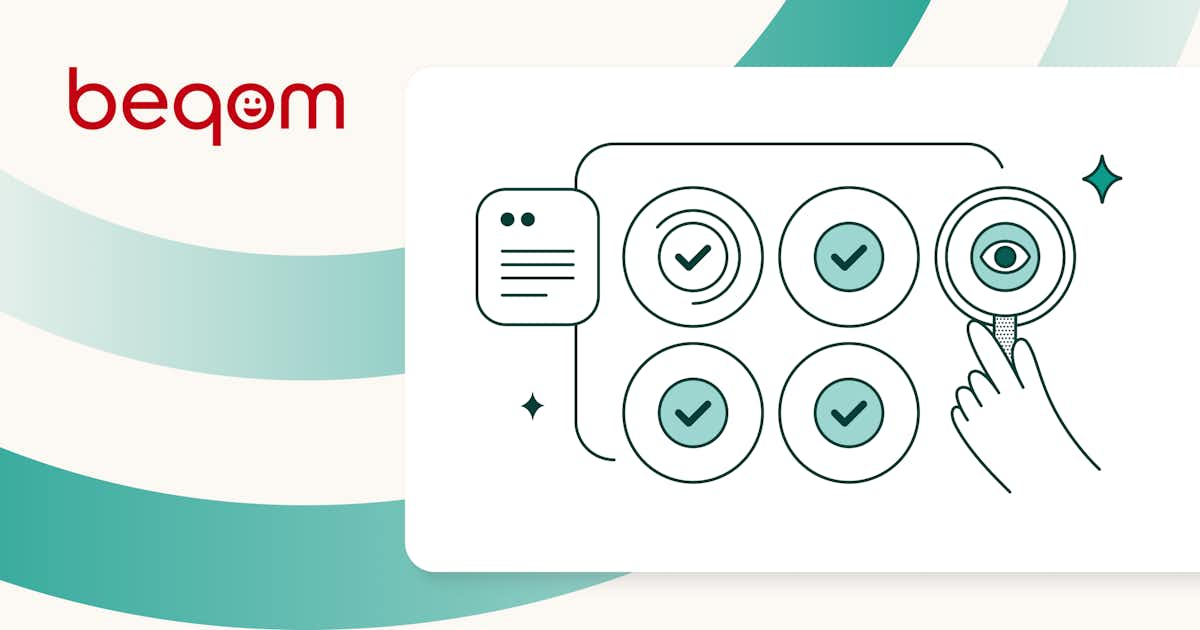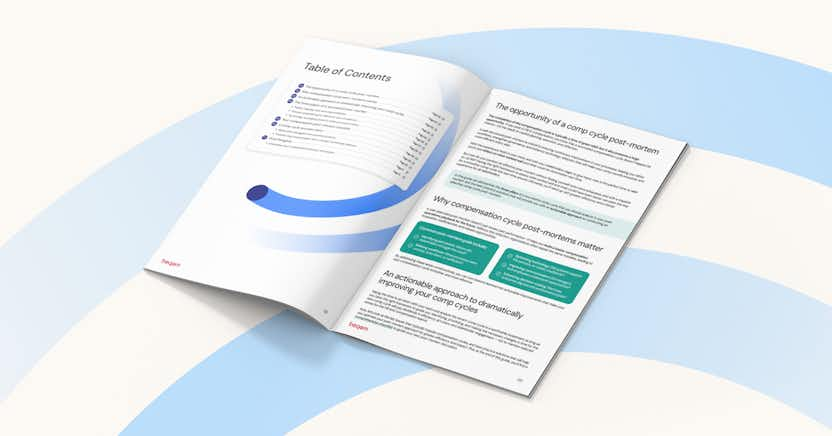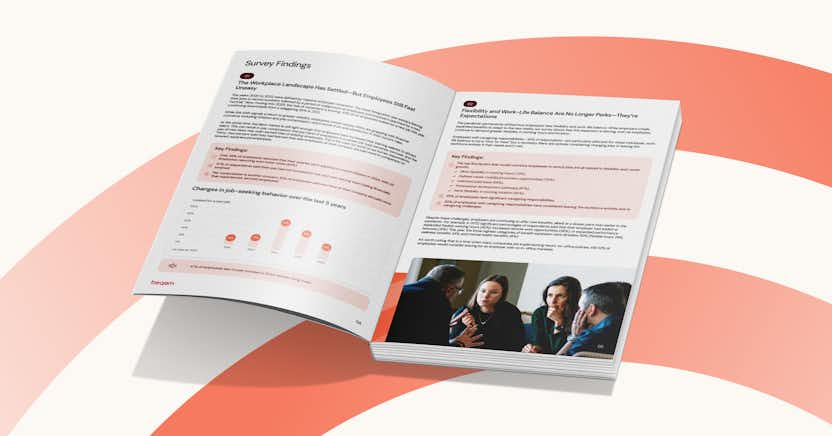2025 Compensation Management Trends: 5 Opportunities to Elevate Your Strategy

The year 2025 is shaping up to be a pivotal one for compensation management. With employees’ expectations evolving rapidly, technology advancing at breakneck speed, and regulatory landscapes becoming increasingly complex, HR leaders and Compensation & Benefits teams have a unique opportunity to reimagine their strategies.
This year isn’t just about keeping up—it’s about stepping ahead. By embracing the top trends shaping compensation in 2025, organizations can enhance equity, foster innovation, and solidify their competitive edge. In this blog, we’ll explore five transformative trends in compensation management and offer practical steps to prepare your organization for success. Plus, we’ll show how modern tools and technologies can make it easier than ever to stay agile and impactful.
1️⃣ Pay equity and transparency as standard practice
Strategic goal: Build trust and competitive advantage, while ensuring compliance, by aligning pay practices with global fairness standards.
Why it matters globally
Pay equity and transparency are now critical components of workplace fairness and compliance worldwide. Regulations such as the EU Pay Transparency Directive and Corporate Sustainability Reporting Directive (CSRD), US state-level pay transparency laws, and Canadian pay equity legislation—among others globally—are setting a new standard for transparency and accountability.
The EU directive will require compliance by 2026, mandating that companies with 100 or more employees in the EU disclose gender pay gaps, provide employees access to salary structures, and conduct regular pay audits.

Preparing for the EU Pay Transparency Directive
Our experts have created a Readiness Checklist that helps evaluate your readiness status & follow clear, actionable steps to prepare for the June 2026 deadline with ease.
In the U.S., state-level regulations are becoming more prevalent. States like California, Colorado, New York, and Washington have introduced laws requiring companies to disclose salary ranges in job postings, provide employees access to their compensation structures, and address pay disparities. These laws make compliance a growing challenge for companies that operate across multiple states and countries.
For global companies headquartered in the U.S., the intersection of domestic and international pay transparency regulations adds complexity. They must simultaneously adhere to local laws while building a cohesive global pay equity strategy that maintains employee trust and addresses compliance needs.
Why it’s important for all companies
Pay equity is more than a regulatory requirement—it’s a driver of trust, engagement, and retention. Transparent and equitable pay practices help organizations attract top talent, reduce turnover, and align with diversity, equity, and inclusion (DEI) goals. Organizations that proactively address pay equity and offer pay transparency can also mitigate the risk of reputational damage and penalties stemming from non-compliance with these laws.
How to prepare
- Understand all applicable regulations: Map out compliance requirements for the EU Pay Transparency Directive, CSRD, and other country or state-level regulations, identifying where they overlap and where unique processes are needed.
- Conduct pay audits regularly: Use analytics to identify and address disparities across gender, race, and other demographics, tailoring strategies for compliance in different jurisdictions.
- Adopt a global-local strategy: Implement a centralized framework for pay equity while allowing flexibility for local laws and market conditions.
- Train leaders and HR teams: Ensure managers understand how to communicate pay practices transparently to employees, aligning with local and global standards.
How beqom helps
beqom’s compensation and pay equity platform equips companies to:
- Automate pay audits and gap analyses to ensure compliance with both U.S. state laws and international regulations like the EU Pay Transparency Directive.
- Provide detailed, real-time analytics to identify disparities and guide corrective actions.
- Manage localized compliance requirements while maintaining a global pay equity framework.
- Enable transparent communication with employees through dashboards and insights into compensation structures.
2️⃣ AI and predictive analytics in compensation
Strategic goal: Leverage AI to drive fair, data-driven compensation decisions and future-proof workforce strategies
Why it matters
AI is transforming compensation by enabling organizations to make data-driven, unbiased decisions. Predictive analytics identify trends, forecast retention risks, and recommend pay adjustments that align with business goals and market realities. This improves accuracy, saves time, and minimizes bias.
How to prepare
- Leverage AI for pay equity analysis: Use AI tools to uncover pay disparities and suggest adjustments based on performance, skills, or market data.
- Forecast future needs: Predict salary trends and workforce needs to remain competitive in hiring and retention.
- Ensure ethical AI use: Partner with vendors like beqom that prioritize transparency and bias-free algorithms in their AI models.
How beqom helps
beqom’s AI-powered capabilities provide actionable insights into compensation trends, helping organizations:
- Conduct data-driven pay reviews.
- Forecast and address workforce needs in real time.
- Align pay practices with business goals and regulatory requirements.
3️⃣ Skill-based pay models
Strategic goal: Align compensation with critical skills to drive agility, innovation, and continuous learning.
Why it matters
The shift towards a skills-driven economy is reshaping compensation. Employees expect to be rewarded for the skills they bring, not just their titles or tenure. Skill-based pay aligns with continuous learning and allows companies to remain agile in fast-changing industries. While performance-based pay is not going away, skills-based models are worth considering.
How to prepare
- Identify critical skills: Build a skills inventory that matches organizational needs.
- Reward skill acquisition: Tie compensation adjustments to measurable skill development.
- Integrate skills into performance management: Link performance reviews to skill growth and align rewards with organizational goals.
How beqom helps
With beqom, organizations can:
- Track employee skills and link them to compensation decisions.
- Align rewards with business-critical skills to drive organizational success.
- Implement flexible pay structures tailored to evolving workforce needs.
4️⃣ Integration of total rewards and well-being
Strategic goal: Elevate employee satisfaction and retention with personalized, holistic total rewards strategies.
Why it matters
Employees now view compensation holistically, valuing non-financial rewards like flexible schedules, mental health support, and career development opportunities. Companies that emphasize employee-centric total rewards see higher employee satisfaction and retention.
How to prepare
- Survey employees: Understand which rewards matter most to your workforce.
- Offer flexible benefits: Customize rewards to meet diverse employee needs, from remote work options to wellness stipends.
- Communicate the full value of rewards: Use tools that display total compensation, including non-monetary benefits, to employees.
How beqom helps
beqom’s platform allows companies to:
- Showcase the total value of rewards packages in personalized dashboards.
- Design and manage flexible reward programs tailored to employee preferences.
- Align non-financial rewards with business and employee well-being goals.
5️⃣ Localized and hybrid pay equity models
Strategic goal: Balance global consistency with localized flexibility to achieve equitable and compliant pay practices worldwide.
Why it matters
Global organizations face diverse market conditions and regulatory requirements. A hybrid pay equity model balances global consistency with localized flexibility, ensuring compliance while addressing regional needs.
How to prepare
- Develop a global pay equity framework: Standardize principles while allowing regional adaptations.
- Empower local teams: Provide tools and guidelines to implement equitable pay practices in each region.
- Monitor compliance globally: Use analytics to track pay equity progress across locations and ensure alignment with local laws.
How beqom helps
beqom supports hybrid pay equity models by:
- Enabling global oversight with local customization.
- Offering automated compliance reporting tailored to regional regulations.
- Providing analytics to monitor and adjust pay equity practices in real time.
Final thoughts: Technology as a driver of change
Technology is the backbone of modern compensation management. A technology platform that is optimized for AI-driven compensation, like beqom, enables organizations to stay ahead of these trends by:
- Simplifying compliance: Automating audits and reporting for regulations like the EU Pay Transparency Directive.
- Enhancing decision-making: Leveraging AI and analytics to optimize pay practices.
- Increasing transparency: Providing employees with clear insights into their total compensation.
As the workforce and regulatory landscape continue to evolve, organizations that adopt innovative solutions like beqom will be best positioned to attract top talent, ensure fairness, and remain competitive in 2025 and beyond. Contact beqom today for more information.















